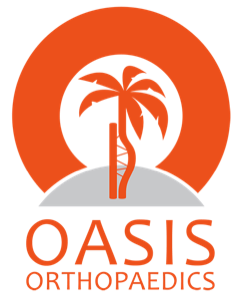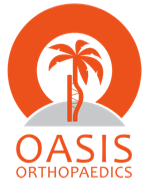
700 Glenhuntly Road
Caulfield VIC 3162
03 9044 4555

700 Glenhuntly Road
Caulfield VIC 3162
03 9044 4555
Hip Arthroscopy
Similar to knee arthroscopy, hip arthroscopy is “key hole” surgery which is performed to examine and treat conditions about the hip. The inner surfaces of the hip joint (and more recently some structures nearby such as muscles and tendons around the hip) can be examined using special techniques, which have been developed and refined over the past 20 years.
The technique is not suitable for all patients and can be technically challenging, as the hip joint is considered a deep joint, being well covered in all directions by large, strong muscles.
In order to perform a hip arthroscopy the patient usually needs a general anaesthetic to allow the muscles to relax. Once this is done a special operating table is used to apply enough force to pull the femoral head away from the acetabulum by approximately 1cm. This creates a space in which a telescope (an arthroscope) can be introduced into the hip joint, using two to four small incisions around the front and sides of the upper part of the femur. Using the telescope, the labrum and the articular cartilage of the femoral head and acetabulum can be inspected as well as any bumps on the femoral head or prolongations of the acetabular walls. In some cases cartilage damage can be treated if fairly localised, chondrolabral separations may be repaired and femoral head bumps or prolongations of the acetabular wall can be removed using a miniature motorised burr. If the cartilage damage is extensive or very advanced, this is considered hip arthritis and has not been able to be well-treated with arthroscopic surgery alone. Initially, arthroscopic treatment of extensive labral injury by removing the damaged tissue has not done well to date, frequently resulting in a more rapid progression to arthritis. More recently, some techniques to attempt to replace a damaged labrum are being pioneered by select surgeons, but it is yet to be seen as to whether this is an effective treatment in the medium to long term.
Other techniques have also been developed for treating conditions near the hip joint but external to it, such as inflammation of the surrounding tendons, fascia and bursa (“tendonitis” or “bursitis”), and even the sciatic nerve. There are also sources of hip impingement that can occur outside of the true hip joint such as ischio-femoral impingement and subspinous impingement which are starting to be treated arthroscopically, but in fairly small numbers of cases and by even smaller numbers of surgeons.
Although performed through small incisions, the amount of work carried out via the arthroscope on the hip joint can often be fairly extensive, and may be associated with a number of risks, including nerve injuries due to the force and pressure required to open the hip joint sufficiently to enable entry of the arthroscope. Fractures of the femoral neck may occur due to the amount and location of the bone removed during treatment of a cam lesion, and very rarely hip joint dislocation may result from destabilisation of ligaments in the hip joint capsule.
The technique is not suitable for all patients and can be technically challenging, as the hip joint is considered a deep joint, being well covered in all directions by large, strong muscles.
In order to perform a hip arthroscopy the patient usually needs a general anaesthetic to allow the muscles to relax. Once this is done a special operating table is used to apply enough force to pull the femoral head away from the acetabulum by approximately 1cm. This creates a space in which a telescope (an arthroscope) can be introduced into the hip joint, using two to four small incisions around the front and sides of the upper part of the femur. Using the telescope, the labrum and the articular cartilage of the femoral head and acetabulum can be inspected as well as any bumps on the femoral head or prolongations of the acetabular walls. In some cases cartilage damage can be treated if fairly localised, chondrolabral separations may be repaired and femoral head bumps or prolongations of the acetabular wall can be removed using a miniature motorised burr. If the cartilage damage is extensive or very advanced, this is considered hip arthritis and has not been able to be well-treated with arthroscopic surgery alone. Initially, arthroscopic treatment of extensive labral injury by removing the damaged tissue has not done well to date, frequently resulting in a more rapid progression to arthritis. More recently, some techniques to attempt to replace a damaged labrum are being pioneered by select surgeons, but it is yet to be seen as to whether this is an effective treatment in the medium to long term.
Other techniques have also been developed for treating conditions near the hip joint but external to it, such as inflammation of the surrounding tendons, fascia and bursa (“tendonitis” or “bursitis”), and even the sciatic nerve. There are also sources of hip impingement that can occur outside of the true hip joint such as ischio-femoral impingement and subspinous impingement which are starting to be treated arthroscopically, but in fairly small numbers of cases and by even smaller numbers of surgeons.
Potential Complications of Hip Arthroscopy
Although performed through small incisions, the amount of work carried out via the arthroscope on the hip joint can often be fairly extensive, and may be associated with a number of risks, including nerve injuries due to the force and pressure required to open the hip joint sufficiently to enable entry of the arthroscope. Fractures of the femoral neck may occur due to the amount and location of the bone removed during treatment of a cam lesion, and very rarely hip joint dislocation may result from destabilisation of ligaments in the hip joint capsule.
The information above is general. All surgical procedures involve some risk. If you would like advice on your specific condition, please contact Oasis Orthopaedics to make an appointment with one of our specialists.
